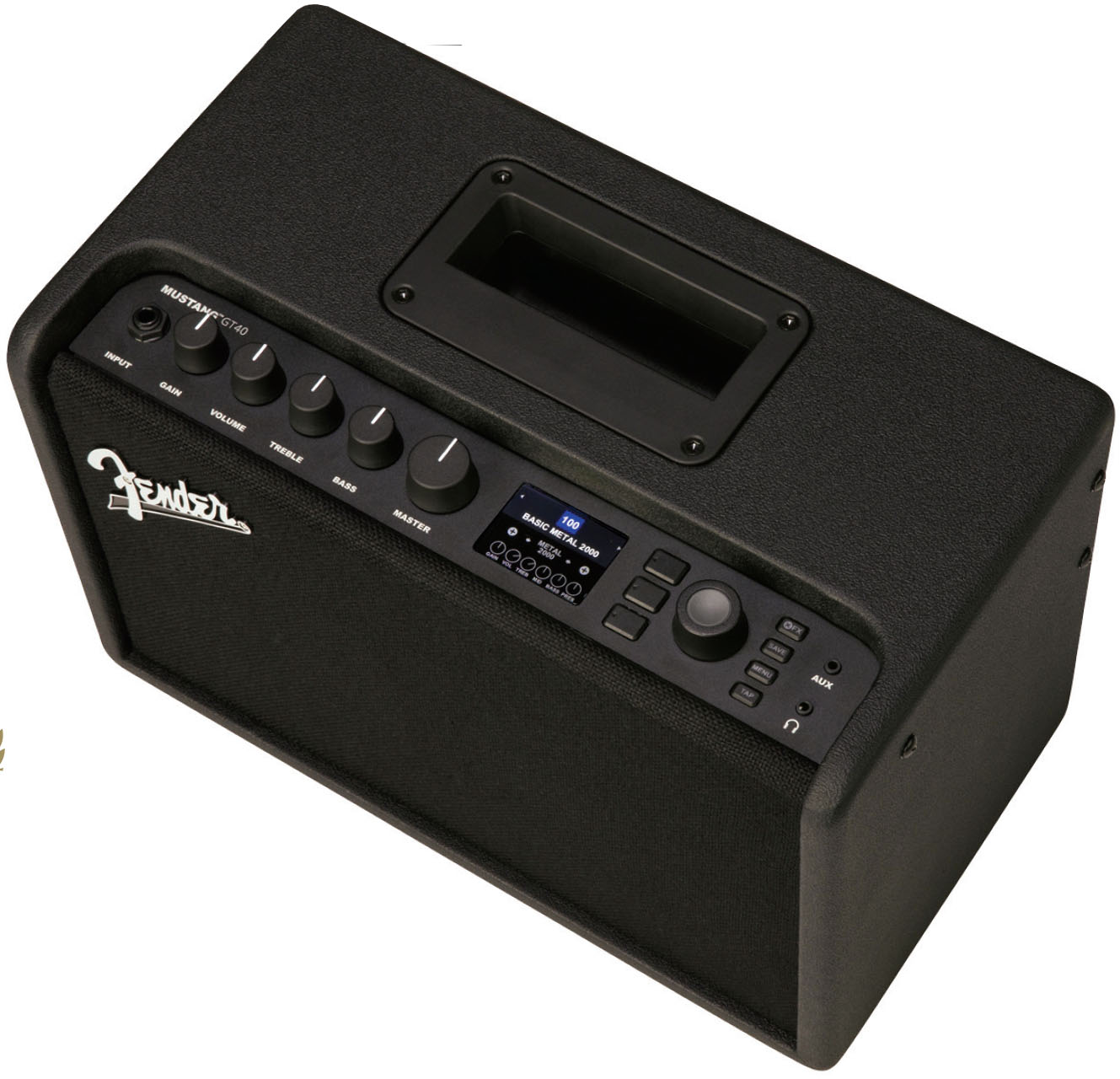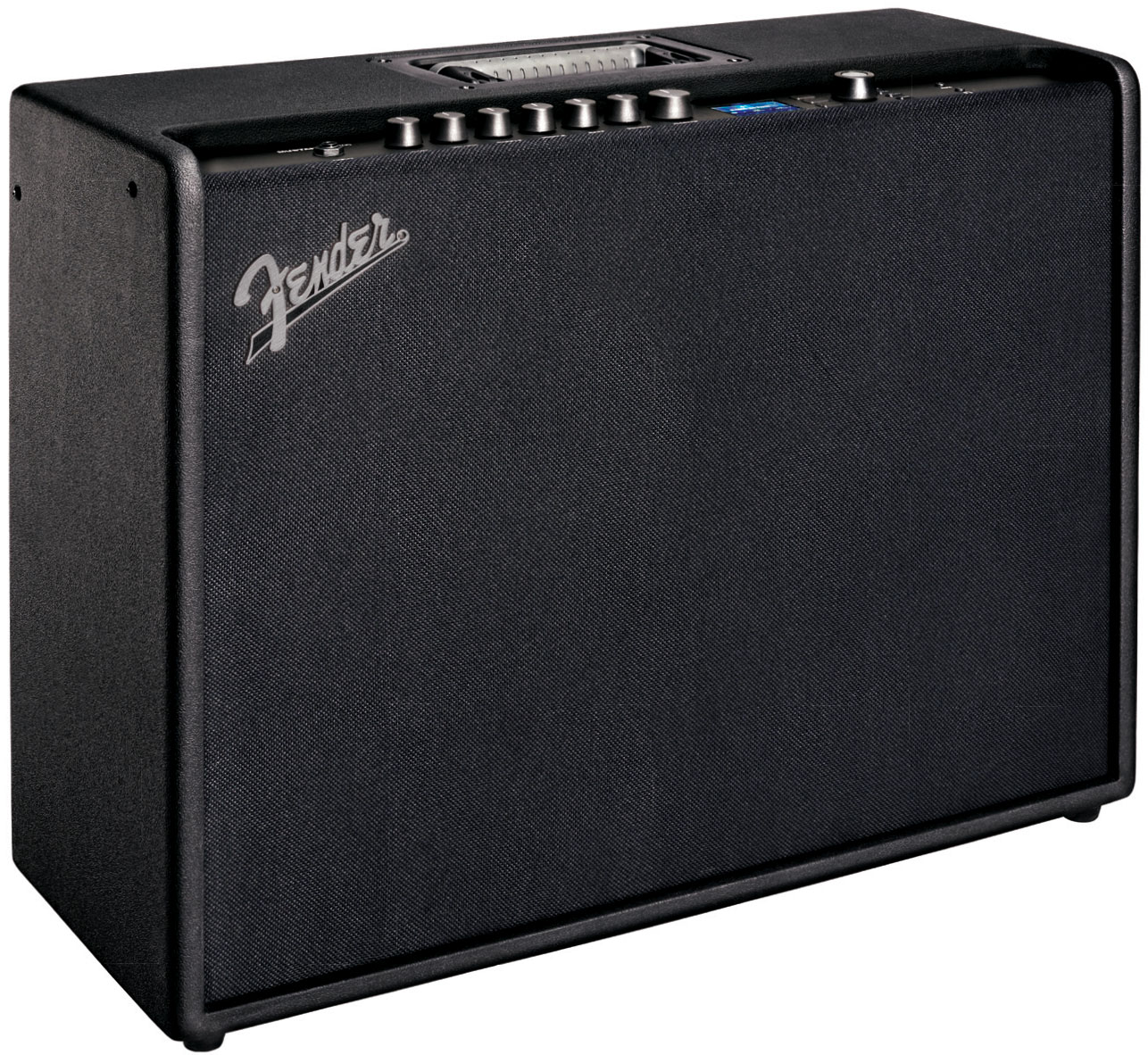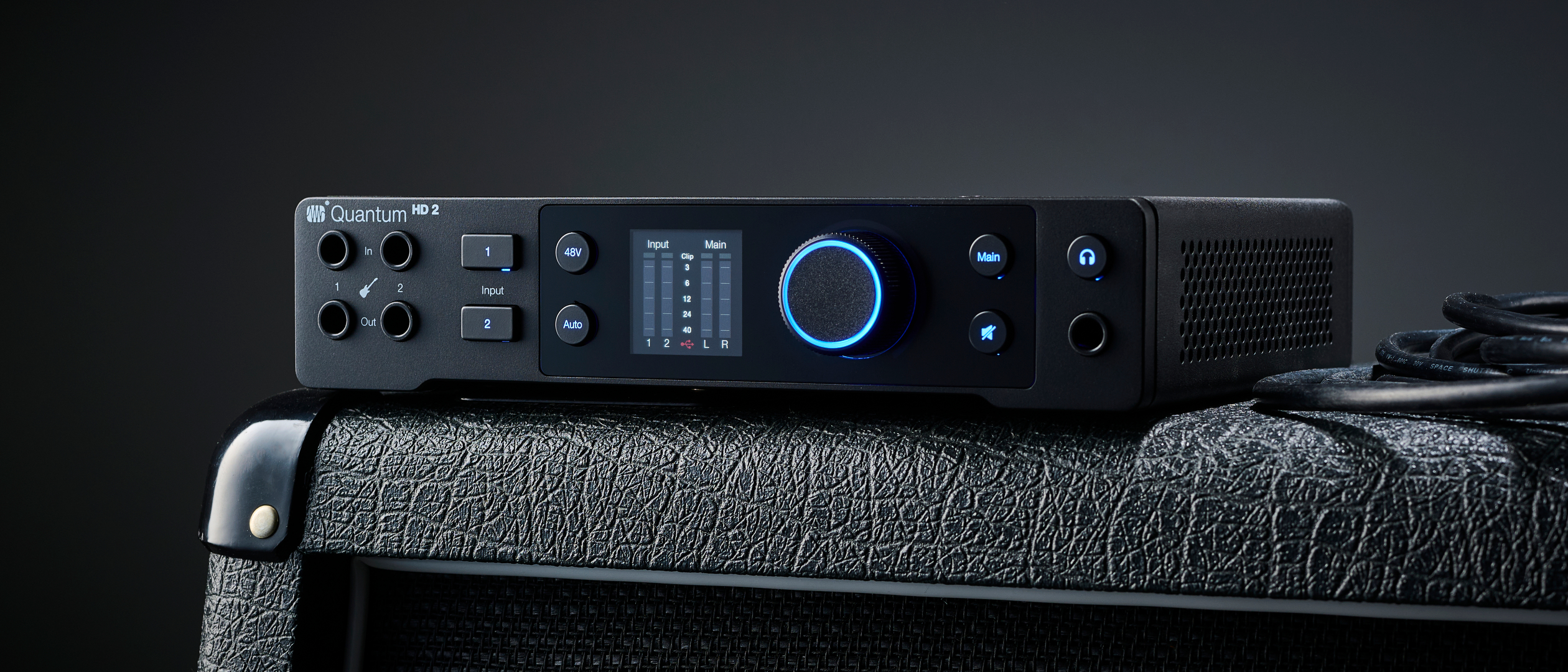Review: Fender Mustang GT 40 and GT 200 Amps

Fender tube amps rightfully have maintained a stellar reputation since the Fifties. However, many guitarists overlook the fact that Fender also makes great digital guitar amps that are the product of the company’s decades of tone know-how.
Fender’s first Mustang Series digital amps, introduced in 2010, were designed primarily for beginners and budget-minded players looking for a versatile amp for practice and home recording, but with the introduction of their new Mustang GT models—the GT 40, GT 100 and GT 200—the line now spans everything from small, portable practice/recording amps to combos big and loud enough to gig with.
But there’s more to the new Mustang amps than just a wider selection of sizes, including an expanded selection of amp and effect models, built-in wi-fi capabilities, compatibility with the new free Fender Tone app, an upgraded full-color display and a looper that records up to 60 seconds of audio.
FEATURES We took a look at the smallest and biggest Mustang GT amps: the GT 40 and GT 200. The smaller GT 40 is a 40-watt amp with two 6.5-inch speakers, and it has five front-panel control knobs (gain, volume, treble, bass, master). While both models provide one 1/8-inch headphone out and one 1/8-inch aux-in on the front panel, the GT 200 also includes balanced stereo XLR line outputs on the rear panel. In addition to its bigger physical dimensions, the GT 200 offers more output power with its 200-watt amp and two 12-inch custom Celestion G12-FSD speakers. Its front control panel adds midrange and reverb controls to the GT 40’s lineup, and the rear panel includes a stereo effects loop. The amp ships with the MGT-4 footswitch unit with four footswitches for controlling preset and effects selection and looper functions (the MGT-4 is an optional purchase for the GT 40).
Both models have the same digital “engine” that provides 21 amp models and 46 effect models. Multiple effects can be used simultaneously, including ones from the Stompbox (distortion/overdrive, compressor, wah), Modulation (chorus, phaser, flanger, tremolo, pitch shift, etc.), Delay and Reverb categories. Accessing presets and programming sounds is easily accomplished via the large full-color display, function buttons and large rotary encoder wheel, but most users will find the Fender Tone app even easier to use for sound programming tasks. Audio can be streamed through the Mustang GT using Bluetooth, and a USB jack enables the amp to function as an audio interface for computer digital recording applications. The optional EXP-1 expression pedal can be connected to the footswitch jack or chained to the MGT-4 to control master volume or various selectable amp and effect parameters (such as wah sweep).
The MGT-4 is a very useful controller with three different modes that reconfigure the functions of the four footswitches. In Presets mode the footswitches make it easy to select presets and scroll up and down through preset banks. In Effects mode the switches allow you to engage effects groups separately like a pedal board. Looper mode offers record/overdub, play/stop and undo functions. The MGT-4 also has a very convenient hands-free tuner mode.

PERFORMANCE Fender has done a great job of combining essential, classic amp and effect models with various adventurous, cultish and obscure selections (such as a three-speaker ’57 Bandmaster, a Sixties Silvertone, ring modulator and Gibson GA-15 reverb). I particularly loved the ’57 and ’61 Deluxe models—two of my all-time favorite “real world” amps, and the latter an often-overlooked beast with an awesome hard rock tone that’s more “British” than most amps made across the pond. The included presets are well-programmed and thought out, but if you want more, a vast selection of presets are available from the community of Mustang GT users via the Fender Tone app.
Get The Pick Newsletter
All the latest guitar news, interviews, lessons, reviews, deals and more, direct to your inbox!
Some skeptics have called the Mustang GT’s tones too “hi-fi,” but to my ears the sounds are more like the finished tracks one crafts in the studio and listens to through studio monitors than the “raw goods” one hears standing directly in front of an amp. The GT 40’s speakers in particular deliver crisp and clear tone ideal for practicing solo or playing along with recordings or backing tracks, while the GT 200’s Celestions are more suited toward playing loud with a band on stage.
STREET PRICE: GT 40, $249.99; GT 200, $599.99
MANUFACTURER: Fender, fender.com
- The Mustang GT 40 is a 40-watt amp with two 6.5-inch speakers, while the GT 200 is a 200-watt amp with two 12-inch custom Celestion G12-FSD speakers.
- Models of 21 amps and 46 effects provide a wide range of classic, modern and even nontraditional gear for programming presets from the front panel or Fender Tone app.
- A built-in looper records up to 60 seconds of audio and allows users to record an unlimited number of overdubs.
- The MGT-4 footswitch controller (included with the GT 200, optional with the GT 40) controls presets, effects, looper and tuning functions.
THE BOTTOM LINE
Whether you’re looking for a digital amp for home practice and recording use or a versatile amp for gigging, Fender’s new Mustang GT Series amps offer a huge selection of great sounds and creative power for incredibly affordable prices.
Chris is the co-author of Eruption - Conversations with Eddie Van Halen. He is a 40-year music industry veteran who started at Boardwalk Entertainment (Joan Jett, Night Ranger) and Roland US before becoming a guitar journalist in 1991. He has interviewed more than 600 artists, written more than 1,400 product reviews and contributed to Jeff Beck’s Beck 01: Hot Rods and Rock & Roll and Eric Clapton’s Six String Stories.
“If you’ve ever wondered what unobtanium looks like in amp form, this is it”: Played and revered by Stevie Ray Vaughan, Carlos Santana, and John Mayer, Dumble amps have an almost mythical reputation. But what's all the fuss really about?
“For the price, it’s pretty much unbeatable”: Harley Benton JAMster Guitar review













